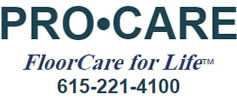
Ceramic tile is used everywhere because it is beautiful, lasts forever and is easy to maintain. However, wet slippery tile is extremely dangerous and can even be fatal. Slip and fall accidents have become the second major cause of death after motor vehicle accidents and they continue to be the leading cause of on-the-job disabilities and compensation claims.
SlipSafe Tile™ products are designed to help mitigate the risk of slip and fall accidents and resulting liability. The cost of prevention pales in comparision to the billions of dollars a year being paid out in negligence suits due to slip and fall deaths and injuries.
SlipSafe Tile™ provides the sensible and inexpensive solution to government mandated slip and fall compliance standards. The focus should be on prevention and not compensation.



CRITICAL NEED
 According to the Centers for Disease Control and Prevention (CDC), over one million Americans suffer a slip, trip, and fall injury and over 17, 000 people die in the U.S. annually because of these injuries. Slip, trip and fall injuries make up 15 percent of all job related injuries, which account for between 12 and 15 percent of all Workers’ Compensation expenses.
According to the Centers for Disease Control and Prevention (CDC), over one million Americans suffer a slip, trip, and fall injury and over 17, 000 people die in the U.S. annually because of these injuries. Slip, trip and fall injuries make up 15 percent of all job related injuries, which account for between 12 and 15 percent of all Workers’ Compensation expenses.
Loss of Life: The death rate related to slip and fall accidents is second only to transportation fatalities in the top ten categories of accidental deaths.
Liability Mitigation: Owners/operators of businesses can mitigate liability by acting prudently in the standard of care maintained for their facilities. Documentation of due diligence and slip resistance testing will enhance standing in any legal issues.
Insurance Costs: Many insurance carriers will discount annual premiums due to use of the SlipSafe Tile™ solution.
Surface Volume: Potentially dangerous, tile floors are everywhere across multiple industries due to aesthetic appeal, easy maintenance and durability.
OSHA & Americans with Disabilities Act: Both mandate a safe work environment for employees and business customers.
Common Sense: We should keep our homes and businesses as safe as possible.
How It Works
SlipSafe Tile™ gained momentum and credibility with the development of a chemical solution that leaves an invisible “tread-like” pattern on ceramic tile and other mineral based materials, including quarry tile, marble, slate, stone and concrete. The treatment works to increase the slip coefficient (slip resistance) of the surface to which it is applied. The minimum standard of OSHA and ADA are .5 or better. SlipSafe Tile™ treatment positively impacts the slip coefficient to levels of .6 or better.
Underwriters Laboratory & American Society of Testing and Materials Coefficient Standards*
| .60 or above | Very Safe |
| .50 to .59 | Relatively Safe |
| .40 to .49 | Dangerous |
| .35 – .39 | Very Dangerous |
Ceramic Tile Institute Coefficient Standards**
| .60 or Above | Slip Resistant |
| .50 to .59 | Conditionally Slip Resistant |
| Less than .50 | Questionable |
The treatment solution has no harmful effects on tile or grout and provides excellent slip resistant safe footing on wet floor surfaces that far exceed floor safety standards mandated by OSHA and The American Disability Act.
Not a Coating So Nothing to Wear Off
Creates Tread-Like Sure Footing
Environmentally Safe, Non-Toxic and Odorless
 FAQ:
FAQ:
Why do surfaces become slippery when liquid is present?
Natural materials such as ceramic, granite, terrazzo, slate, porcelain tile, concrete and bathtubs have natural voids in them. The larger the void, the more the surface of that material is slip resistant. This void creates a tread for you to walk on. Ceramic or glazed tile, as well as porcelain, is coated to create a shiny finished look to a floor. These coatings fill in the natural void up to 70%. When the surface is wet, the water fills in the remaining 30% of the void and that is why a floor becomes slippery not allowing any space between the water and the bottom of your foot creates a hydroplane effect that can lead to a potential slip and fall hazard.
How large an area can Janssen’s treat?
Whether your room is 5 sqft in a residential home or 50,000 sqft in a commercial facility, Janssen’s can treat any size area.
How does SlipSafe Tile™ Treatment address this hydroplane effect?
When SlipSafe Tile™ treatment is applied it microscopically treads the surface of ceramic tile, quarry tile, terrazzo, concrete and other natural stone surfaces to mitigate slippery conditions on wet floors. It increases the coefficient of the surface when wet which eliminates this hydroplane effect.
Will SlipSafe Tile™ Treatment be offensive to staff or customers?
No. The treatment solution is odorless, non-toxic and environmentally safe. It is actually much less offensive than ordinary household bleach. Application is usually not even noticed by on site work force.
Will SlipSafe Tile™ Treatment damage tile or grout?
Extensive research and testing to eliminate any harmful effects to tile and grout was conducted prior to use in a major northwest franchise restaurant chain prior to SlipSafe Tile™ first major commercial application in 1997. This research and testing revealed no negative effect to the structure of the tile.
